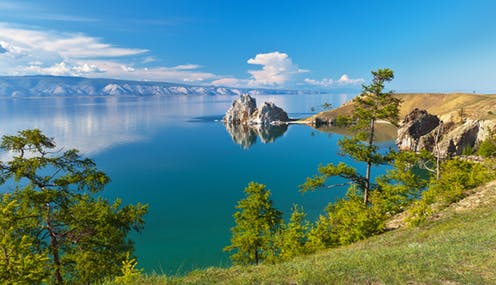
Olkhon is a sacred place on Lake Baikal, a place of strength and maximum attraction not only for Irkutsk residents and residents of the region: the flow of tourists to the island is growing from year to year. This brings money to the inhabitants of the island and entrepreneurs who conduct their business there, brings some funds to the budget of the Olkhon district and the Irkutsk region as a whole – and huge problems for Baikal. This has caused the authority of the region both released and planned rules of forbidden things residents and visitors shouldn’t do around Olkhon. You probably have heard that Russians believe in superstitions, now this time the rules have nothing to do with supernatural things.
The reason of restrictions
In November 2017, the environmental department conducted a large-scale audit, during which 16 camp sites were closed, because they were worsening the state of the lake ecosystem. Most of the hotels were listed as private housing – they were open in areas designated for individual housing construction, or in areas designed for personal subsidiary plots. At the same time, sewage effluents after the commercial buildings were poured into the lake without any treatment. For example, the recreation center “Baikal Ostrog” accommodated up to 500 tourists and the sewer was lowered into the ground 100 meters from Lake Baikal. In February 2018, Rosprirodnadzor stated that 40 out of 52 camp sites on Lake Baikal operate illegally.
In total, the amount of damage caused to the ecosystem of the lake by business violators exceeded 17 million rubles.
1. No constructions
Not only camp sites were closed, which actually harmed the ecosystem of Olkhon and Baikal. The department began to prohibit local residents from repairing houses, erecting extensions, and building new housing. However, deputies of the regional parliament provided the opportunity to move to any other district of the Irkutsk region where constructions are still allowed. It is literally anywhere that is not a threat to Lake Baikal which is included on the list of World Heritage.
2. No vehicles
Olkhon’s life is growing with more and more prohibitions, some were adopted even before the creation of the environmental department. The example of these rules such as the ban on the use of ATVs and other light equipment – cross-country motorcycles, pit bikes, snow and swamp vehicles, tricycles on the island. Tourists and local residents drove these types of equipment not only along the roads, but throughout the steppe, destroying the grass cover. To restore it, it will take decades. Now on the island you can use the ATV only for the needs of the national park or to ensure the social and domestic needs of citizens who live in the settlements bordering the park – in the absence of other ways of travel.
In the future, they want to ban cars from traveling around the island – especially where there are no existing permitted decorated roads. For this matter, those who come to rest on the Buryat coast of Lake Baikal can only travel on vehicles on asphalt roads. Leaving cars is allowed only in specially equipped places.
3. No camping
The “wild” vacation, beloved by many tourists, is now banned: it is forbidden to put up tents and camp on temporary campsites. The measure was introduced due to a sharp increase in anthropogenic pressure on the territory. The ban is valid for almost the entire coast, with the exception of the territories of municipalities, as well as specially designated places. You cannot relax in tents and make bonfires on the Sarai beach near the village of Khuzhir. Part of the Sarai beach was seized from the municipality by the prosecutor’s office and returned to the jurisdiction of the Baikal National Park. In Peschanka (Yurgan Bay), you can pitch tents at special sites. You can stand on the municipal beach on the other side of the village to Maly Khuzhir, as well as on the coast near Kharantsov.
Due to the high anthropogenic load, the Tashkina and Idiba plains overlooking the east coast are closed for visiting. Permanently closed access to Cape Wuhan, Izhimey and Mount Jima – this is a protected area.
4. No overflowing tourists
The authorities of the Irkutsk region suggest introducing a “black list” of tourists who violate the order on the island of Olkhon. For this, however, it is necessary to strengthen the registration and stuff the island with CCTV cameras, and this is an additional burden on the island’s ecosystem. In order to somehow protect the island from the influx of tourists, in June 2018, ONF activists proposed the introduction of an electronic queue for Olkhon, which will be maintained on the website, in the mobile application and registration point in Sakhyurt.
In July 2018, the Preserved Baikal Region determined the norm of the recreational load on tourist routes on Olkhon. Now, no more than 2 thousand people a day can go on excursions. The public movement “All-Buryat Association for the Development of Culture” proposes to ban tourism and any construction on Olkhon for a period of 20 years. After that, with the advent of new technologies, it will be possible to explore the island without damage to nature.
All of the restrictions may sound like a rejection to people who are eager to visit the region. But, seen from another point of view, these rules are the only way to save the nature. A good nation would definitely value the non-renewable resources it has over the money they can get from all the tourism industry. This is a good example of not being greedy despite the chances of getting a lot from selling spots in the region as tourist attractions. Now that you know the forbidden things you shouldn’t do in Olkhon, you can make a better plan when visiting Russia later.
